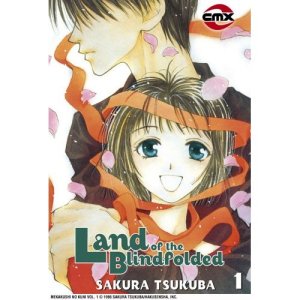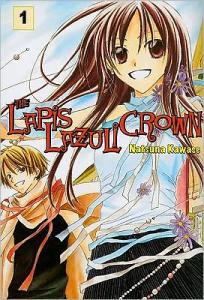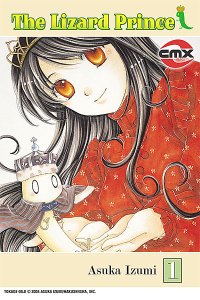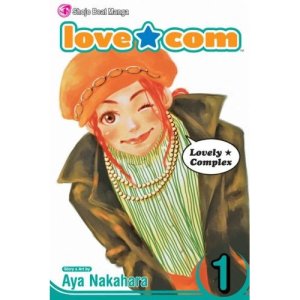This isn’t really a “Best of 2009” list, as I don’t feel like I read enough comics from places other than Japan to make that kind of list with a sufficient degree of authority, but I didn’t want to neglect books that I really enjoyed this year. I’m not going to say that all of these books are equally entertaining or good in the same ways; I’m not shooting for an equivalent level of quality. I’m just saying that these are the books that lingered in my memory and that I’ll return to again in the future. I’ll subdivide the books into “New Stuff” and “Continuing Stuff.”
New Stuff:
 The Adventures of Blanche, written and illustrated by Rick Geary, Dark Horse. Comics by Geary are always a cause for celebration, and this collection of stories about a feisty musician traipsing through genre-based dangers was one of the year’s most pleasant surprises.
The Adventures of Blanche, written and illustrated by Rick Geary, Dark Horse. Comics by Geary are always a cause for celebration, and this collection of stories about a feisty musician traipsing through genre-based dangers was one of the year’s most pleasant surprises.
Asterios Polyp, written and illustrated by David Mazzucchelli, Pantheon. I’m always a little surprised when someone describes this book as technically brilliant but cold. I thought it had a very solid emotional core beyond the astonishing level of craft.
Johnny Hiro, written and illustrated by Fred Chao, AdHouse Books. This book didn’t do nearly as well as it should have in pamphlet form, so let me extend my heartfelt thanks to AdHouse for collecting the existing issues plus unpublished material. It’s simultaneously a winning genre mash-up and a warm, grown-up romance, and it’s a treat.
 Masterpiece Comics, written and illustrated by R. Sikoryak, Drawn & Quarterly. What do you get when you combine great works of literature with classics of comic books and strips? In Sikoryak’s case, you get breezy, inspired work that displays great versatility, intelligence, and a sense of fun.
Masterpiece Comics, written and illustrated by R. Sikoryak, Drawn & Quarterly. What do you get when you combine great works of literature with classics of comic books and strips? In Sikoryak’s case, you get breezy, inspired work that displays great versatility, intelligence, and a sense of fun.
Mijeong, written and illustrated by Byung-jun Byun, NBM. It’s not as good as Run! Bong-Gu, Run!, but this collection of short stories is never short of very, very good and is often brilliant.
My Mommy Is in America and She Met Buffalo Bill, written by Jean Regnaud, illustrated by Émile Bravo, Fanfare/Ponent Mon. Gloriously sad and sharply observed, this book offers one of the freshest looks at childhood and grief you’re ever likely to find.
 Nightschool: The Weirn Books, written and illustrated by Svetlana Chamkova, Yen Press. A comic featuring vampires and teenagers that doesn’t make me roll my eyes until they water? What strange magic is this? It’s actually just Chamkova fulfilling her prodigious promise as a graphic storyteller.
Nightschool: The Weirn Books, written and illustrated by Svetlana Chamkova, Yen Press. A comic featuring vampires and teenagers that doesn’t make me roll my eyes until they water? What strange magic is this? It’s actually just Chamkova fulfilling her prodigious promise as a graphic storyteller.
Stitches: A Memoir, written and illustrated by David Small, W.W. Norton and Company. Aside from being strikingly drawn, I think this is a beautifully shaped memoir, functioning perfectly as a story in its own right. The fact that the terrible things Small relates actually happened just adds a layer of disquiet.
Underground, written by Jeff Parker, illustrated by Steve Lieber, colored by Ron Chan, Image Comics: There should be more snappy genre comics like this, you know? It’s a smartly executed thriller set in the perilous depths of a cave in the Appalachians.
Continuing Stuff:
 Aya: The Secrets Come Out, written by Marguerite Abouet, illustrated by Clément Oubrerie, Drawn & Quarterly. I was briefly afraid that this was the final volume of this wistful, multigeneration soap opera about life in the Ivory Coast in the 1970s. Fortunately, there seem to be at least two more volumes still to come of Aya and her unmanageable friends and family.
Aya: The Secrets Come Out, written by Marguerite Abouet, illustrated by Clément Oubrerie, Drawn & Quarterly. I was briefly afraid that this was the final volume of this wistful, multigeneration soap opera about life in the Ivory Coast in the 1970s. Fortunately, there seem to be at least two more volumes still to come of Aya and her unmanageable friends and family.
Empowered, written and illustrated by Adam Warren, Dark Horse. I’m so glad that Dark Horse released a pamphlet chapter of this ongoing series of graphic novels, as that might help to build the audience it deserves. Smutty and sweet in equal measure, it’s as sharp a parody of super-heroics as you’re ever likely to find.
Moomin: The Complete Tove Jansson Comic Strip, written and illustrated by Tove Jansson, Drawn & Quarterly. This is a golden age of reprints of quality comic strips, and this is my absolute favorite of the bunch.
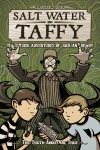 Salt Water Taffy, written and illustrated by Matthew Loux, Oni Press. Two brothers embrace the weird on a seaside vacation. This is my go-to all-ages recommendation, by which I mean I’m as strident in suggesting adults buy it as I am in suggesting that kids will like it.
Salt Water Taffy, written and illustrated by Matthew Loux, Oni Press. Two brothers embrace the weird on a seaside vacation. This is my go-to all-ages recommendation, by which I mean I’m as strident in suggesting adults buy it as I am in suggesting that kids will like it.
Scott Pilgrim vs. the Universe, written and illustrated by Bryan Lee O’Malley, Oni Press. As long as this book is releasing new volumes, it will be on any list of this nature that I write.
Yôkaiden, written and illustrated by Nina Matsumoto, Del Rey. This witty fantasy-adventure got even better with the second volume. Now we have to wait for the third.



 Posted by davidpwelsh
Posted by davidpwelsh 